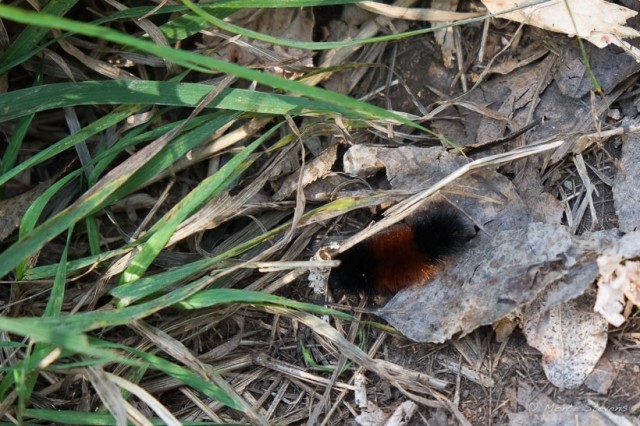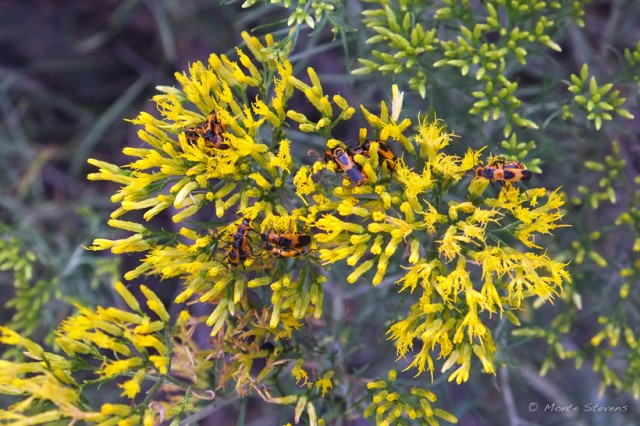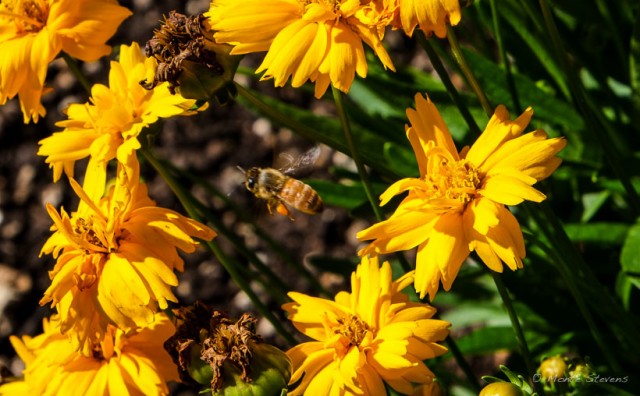I always look where I’m stepping this time of the years as I see these beautiful caterpillars all over the trails at the Environmental Learning Center. My walk last week included a few photos of these caterpillars, a gopher snake, a couple of white tail deer and some large insect carrying a green worm that was bigger that it was. What a struggle it was having but such determination. If we spend the time we can learn so much from nature.
After my walk I decided to find out more about these Wooly Bears. So, what’s a Wooly Bear Caterpillar? Well, it’s also called an Isabella Tiger Moth and can be found in many cold regions, including the Arctic. The banded Woolly Bear larva emerges from the egg in the fall and overwinters in its caterpillar form, when it literally freezes solid. It survives being frozen by producing a cryoprotectant in its tissues. (Sounds painful) In the spring it thaws out and emerges to pupate. Once it emerges from its pupa as a moth it has only days to find a mate. In most temperate climates, caterpillars become moths within months of hatching, but in the Arctic the summer period for vegetative growth – and hence feeding – is so short that the Woolly Bear must feed for several summers, freezing again each winter before finally pupating. Some are known to live through as many as 14 winters.
There’s an annual Woolly Bear Festival held every Fall in downtown Vermilion, Ohio, on Lake Erie. The one-day, family event, which began in 1973, features a woolly bear costume contest in which children, even pets, are dressed up as various renditions of the woolly bear caterpillar. The festival is held every year around October 1 on a Sunday on which the Cleveland Browns have an away game. It is touted as the largest one-day festival in Ohio. Could be a good photo opportunity.




